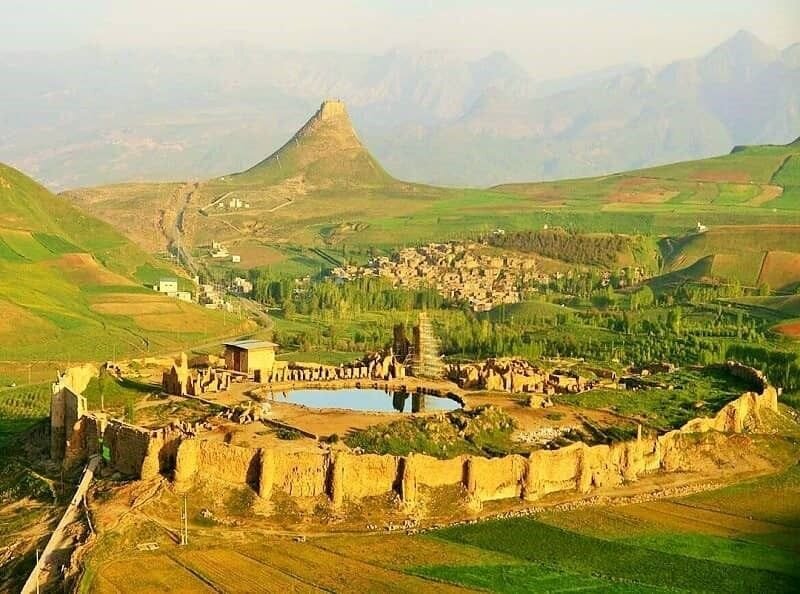Tourism minister visits UNESCO-designated temple, calls for more investment

TEHRAN – On Thursday, the Iranian tourism minister paid a visit to Takht-e Soleyman, which was once a principal fire temple of the Zoroastrian faith in ancient Persia.
Ezzatollah Zarghami called for more investment in tourism infrastructure of the UNESCO-registered site, saying: “We are currently looking for an investor to complete its [tourism] infrastructure in the Ministry of Cultural Heritage, Tourism and Handicrafts.”
Situated in Takab county of West Azarbaijan province, Takht-e Soleyman is now an atmospheric destination for domestic and foreign sightseers.
“This complex is unique in its kind… Being subject to many excavations, its lake has a depth of more than 100 meters,” the minister said.
The minister said more investment may be made to help preserve that ancestral heritage, adding: “By strengthening tangible heritage, we seek to promote the intangible heritage as both are appreciated…”
“The present and future generations should get to know the identity of their ancestors,” Zarghami explained.
Overlooking a lake with a backdrop of a snowcapped highland, the ancient interweaves a scenic natural context with a rich harmonious composition. It reveals architectural achievements of outstanding universal values, which from artistic, religious, mythical, and historical points of view, emerge from the synergy of a man-made and spectacular natural setting.
They established the ensemble in a geologically anomalous location where the base of the temple complex sits on an oval mound roughly 350 by 550 meters. It encompasses a lake roughly 80 by 120 meters and a Sassanid-era Zoroastrian temple complex dedicated to Anahita, an ancient goddess of fertility, parts of which were rebuilt in the 13th century during the Ilkhanid era.
They say Takht-e Soleyman’s name isn’t based on real historical links to the Old Testament King Solomon but was a cunning 7th-century invention by the temple’s Persian guardians in the face of the Arab invasion.
In the 13th century, Takht-e Soleyman became a summer retreat for the Mongol Ilkhanid khans. The remnants of their hunting palace are now covered with a discordant modern roof forming a storeroom (often locked) for amphorae, unlabelled column fragments, photos, and a couple of ceramic sections of those ancient gas pipes.
According to Britannica Encyclopedia, its surrounding landscape was probably first inhabited sometime in the 1st millennium BC. Some construction on the mound itself dates from the early Achaemenian dynasty (559–330 BC), and there are traces of settlement activity from the Parthian period.
AFM
